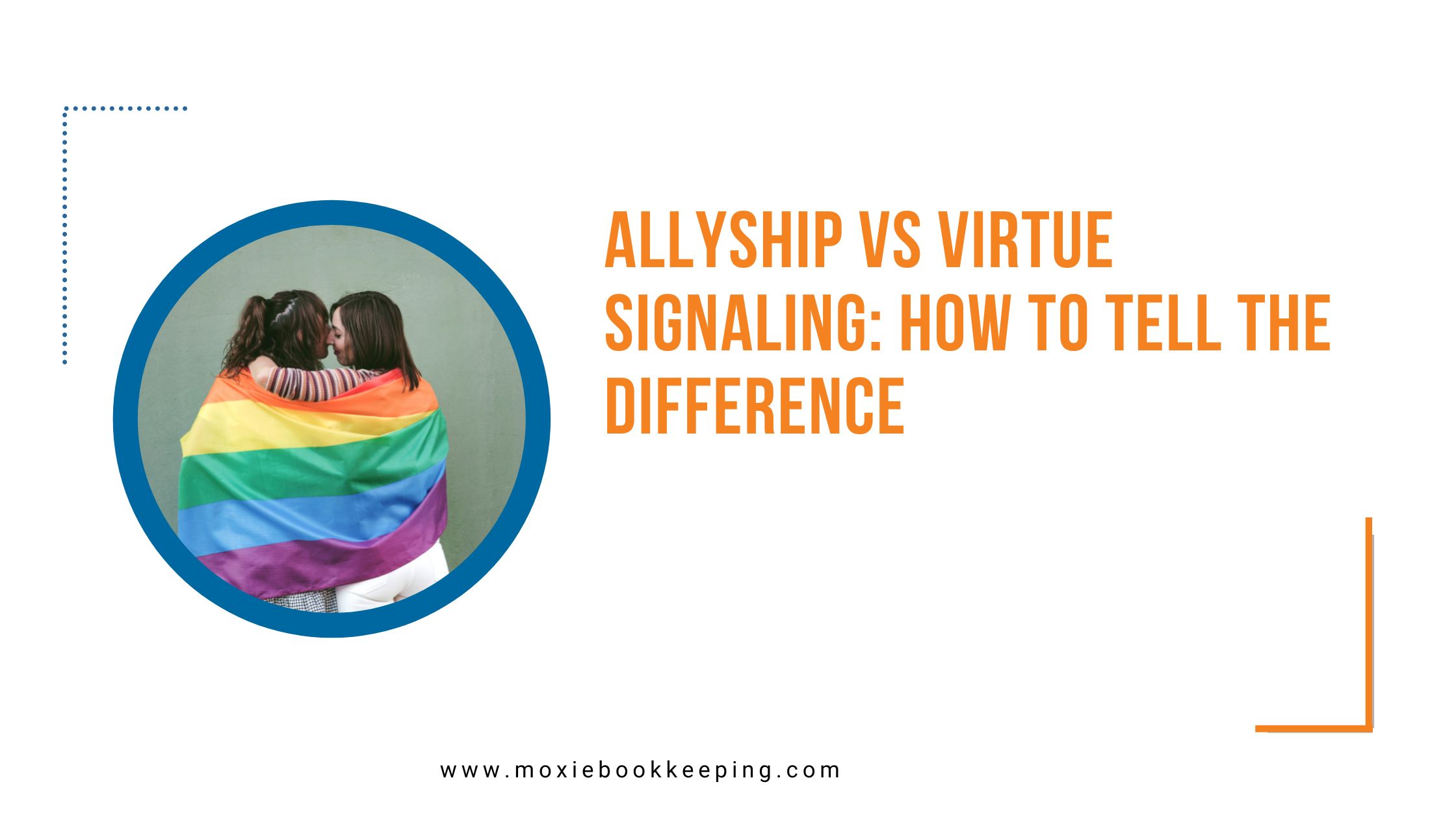Aka Virtue Signaling vs True Activism: how can you tell the difference?
June is Pride Month, full of events and content celebrating and supporting the LGBTQIA+ community.
And we love this celebration and are here for it, in support of our own LGBTQIA+ team members, and the wider community.
Something on our mind at this time of year though is the question of virtue signaling vs doing the real work (aka being a true ally), and how can we tell the difference.
What is Virtue Signaling anyway?
A quick refresher on virtue signaling for those who want it: virtue signaling is the action or practice of publicly expressing opinions or sentiments intended to demonstrate one’s good character or the moral correctness of one’s position on a particular issue. In other words, virtue signaling is faux allyship that’s all about you and how you want to be viewed in the world, not about you making change in the world for the greater good (#deathlyhallowsforever).
So much progressive and social justice-related messaging shared by businesses and every day people falls under the heading of virtue signaling. Greenwashing is a perfect example, and more to the point for today’s blog post, so is Rainbow Washing.
But how can you know whether your behavior and words fall under virtue signaling or truly counts as allyship.
Virtue Signaling or Ally-ship?
There is a simple question that can guide you to an answer:
Does your activism imply a cost to you?
And by extension, are you using your own money, time, effort to help the cause? Are you giving up privilege, opportunity, power in different ways so that the under-represented needs of a traditionally marginalized group can be supported and advanced?
And more importantly…
Is the cost of your allyship proportional to your own privilege, access, and power?
The privilege, access, and power of a white male millionaire CEO – and therefore scope for sacrifice and cost – is huge compared to that most, let’s say, solo parents running their own maker business. The cost and sacrifice for a wealthy person with much greater power, wealth, and influence needs to be proportional to the resources they have access to if they truly want to work as an ally and towards a more equitable world for all.
And we need those with the greatest access to sacrifice the most. This is how we move to a more equitable and just world.
So if we take this back to you: ask yourself, what is your current allyship costing you? And is that cost proportional to the access, the privilege, and the power you have access to?
These aren’t not easy questions, and it can be hard to face your own privilege and to give up resources and power. Give yourself grace as you do this work, know it’ll be imperfect, and keep going!
Only you can answer these questions. And once you have, the answers can guide you in assessing the impact your allyship is currently having and whether you can expand that further.
Resources, support, further reading
If you’re a business owner looking to foster true Allyship and more equitable space inside your business, we can’t recommend our amazing clients enough for support around that: Canopy Equity Coaching
Shout out to the amazing creative consultant Nora Rahimian for introducing us to the framework of proportional allyship.
And for an expansion on this topic of virtue signaling vs true allyship, I love this article: What does It Really mean to Be an Ally by Nika White.
Have thoughts around virtue signaling and allyship? We would love to read them. Drop them below!

I love this post, especially as I get ready to run my speaking up for change challenge next week. I know that one reason a lot of people who want to be good allies DON’T speak up is that they don’t want to be perceived as making it all about them (aka virtue signaling). So yes, if we’re going to speak out and ask other people to take action, what actions are WE going to take to improve our own allyship. Great food for thought here.
Absolutely, Lisa. This is spot on. Wishing you all the best for your Speaking Up for Change Challenge!